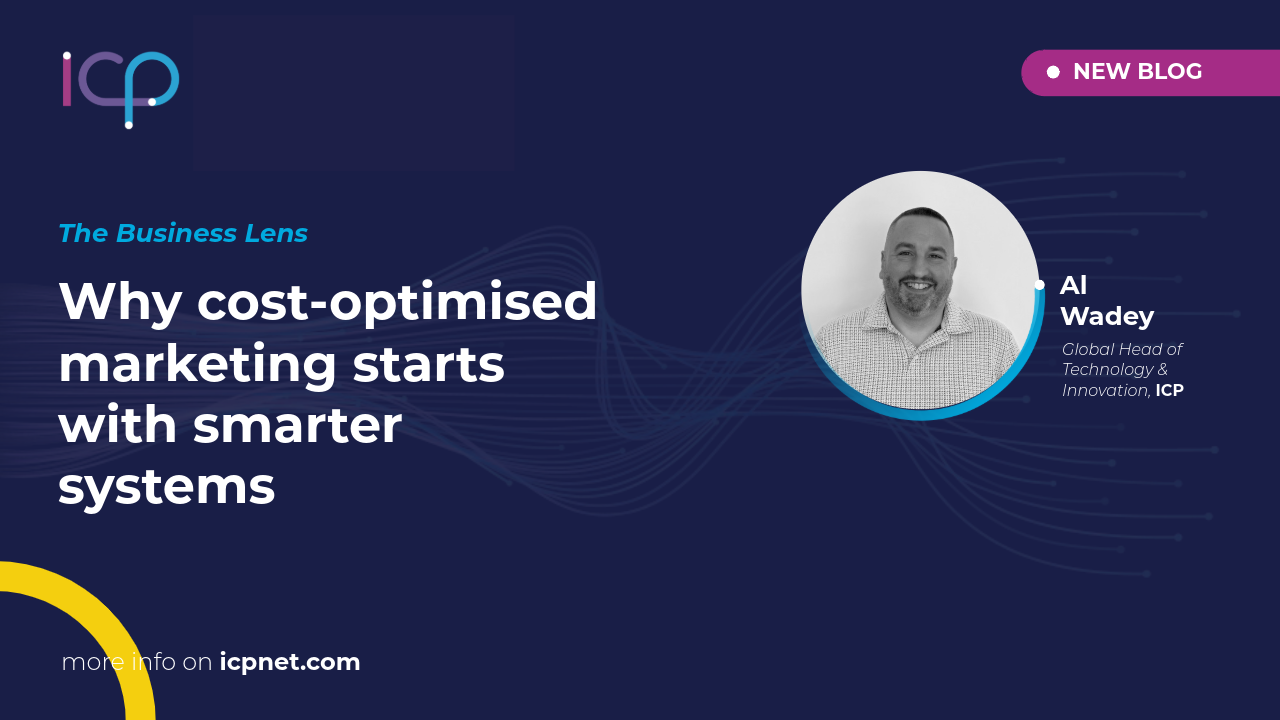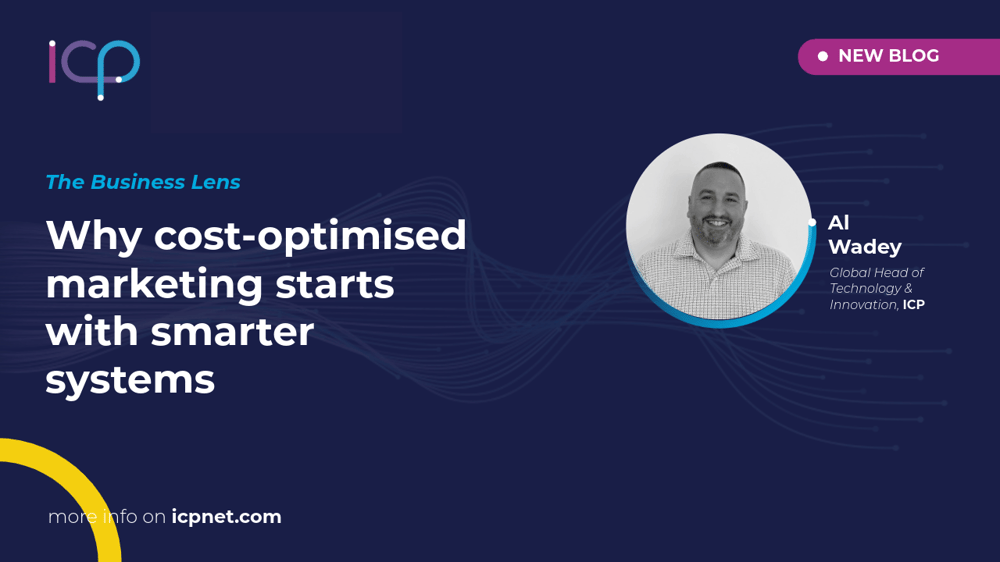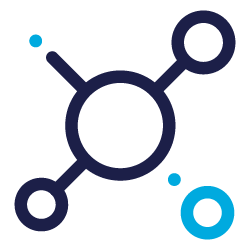

The Business Lens: Why cost-optimised marketing starts with smarter systems
For years, marketers have lived with the mantra: “do more with less.” Budgets are trimmed, expectations raised, and the pressure to prove ROI is relentless. But let’s move past the obvious, this isn’t simply about working harder or stretching smaller teams. The real challenge is that most digital asset management (DAM) systems weren’t built to deliver the kind of decision-grade insight that marketing leaders need today.
What if your DAM could do more than store? What if it could drive growth by showing which assets deliver the best returns, which workflows create waste, and how campaigns could be optimised before the c-suite even asks the question?
The next phase: systems as ROI multipliers
DAM used to be a repository. Today they must be decision systems: sources of actionable insights that feed campaign planning, creative reuse, and commercial measurement.
Why that matters now: AI agents and automation are already shortening campaign cycles and increasing the volume of personalised, high-value variants that reach customers. At a recent global marketing technology event, Marriott communicated how, with the introduction of AI agents, their teams were helped to cut campaign time-to-market dramatically — around a 70% reduction in campaign timelines.
Those gains are business-critical: when technology reduces time and friction, marketing teams can iterate more, prove what works, and reduce per-campaign cost — which is exactly what CFOs want to see. Vendors are extending DAMs with AI-driven asset intelligence and built-in analytics, enabling asset reuse, forecasting, and pre-publish performance signals.
AI is not just automation — it’s a forecasting and optimisation engine
AI doesn’t only remove manual tasks, allowing you to assign your valuable resources to other more important work. When combined with clean data and connected systems, it predicts which assets and creatives will perform, prioritises reuse, and surfaces the likely ROI of campaign permutations — before you commit production budget. That’s how you can delight your people and foster greater innovation in your business
This capability is central to a cost-optimisation strategy. Global analyses of personalisation show that when you get personalisation right you materially reduce acquisition costs and lift ROI — McKinsey’s research on personalisation shows large gains in acquisition cost and ROI when personalised approaches are executed well.
Making the case to the CFO
Imagine walking into a budget review with a dashboard that shows:
- Which campaigns delivered the strongest ROI per asset.
- How much cost was avoided by re-using content instead of recreating it.
- The measurable productivity gains from AI automation in tagging, routing, or approvals.
This isn’t the future. It’s available now—if systems are set up with analytics-first architecture and AI baked in.
Practical Steps for Marketing Leaders
Below are the four priority moves we’d recommend. Each section includes what to do, why it creates urgency, and how to start asking the right questions internally and of your vendors. Use our maturity assessment to benchmark where you are and prioritise.
1. Audit Your Current Stack
What:>- Review all DAM, CMS, and logistics tools to determine if they deliver actionable ROI insights or merely act as storage and workflow systems.
- Without visibility into which assets drive performance, teams risk wasting resources> on underperforming content or redundant workflows. This blind spot directly impacts budget efficiency and slows campaigns.
- Ask: Which assets are used most? Least? Where are bottlenecks in workflow? How successful have your assets been by channel, market or another metric important to your business?
- Start collecting usage stats, campaign performance data, and cost metrics.
- Maturity Assessment Tool to score your systems and identify gaps in analytics, automation, and integration
2. Prioritise AI-Ready Features
What:
- Implement features such as asset recommendations, automated metadata tagging, predictive analytics, and AI-assisted approvals.
- AI transforms systems from reactive to proactive, predicting which assets will perform, recommending reuse, and reducing time spent on manual tasks. Without AI, teams cannot scale personalisation, optimise content, or justify spend effectively.
- Evaluate existing platforms for AI capabilities and roadmap compatibility.
- Pilot AI-assisted tagging or recommendation workflows on a small campaign.
- Ask: Which manual processes could be automated? Where could predictive analytics inform decisions?
3. Connect Systems Across the Chain
What:- Ensure integration between DAM, CMS, logistics, and campaign platforms so data and assets flow seamlessly.
- Siloed systems cause inefficiency, errors, and duplication, slowing time-to-market and undermining ROI. Integrated systems allow marketers to see performance holistically and make faster, informed decisions.
- Map your current workflows end-to-end: asset creation → storage → distribution → performance tracking.
- Identify where data is duplicated or delayed.
- Ask: Which integrations are missing? Where can automation replace manual handoffs?
- Use the Maturity Assessment Tool to evaluate integration coverage and automation readiness.
4. Shift the Narrative
What:
- Reframe technology from a “cost centre” to a strategic driver of efficiency, growth, and brand impact
- Teams often justify spend reactively, which leaves marketing vulnerable to budget cuts. Demonstrating measurable value secures investment and positions marketing as a revenue enabler.
- Capture metrics from steps 1–3: cost savings, campaign ROI, time saved, and asset utilisation.
- Communicate results with executives in terms of business outcomes, not just tool features
- Ask: What story does our data tell about efficiency and growth? How can this influence the next budget cycle?
The takeaway
Marketing teams that modernise their foundations will be the ones chosen for future investment. AI and integration give you speed, visibility and the evidence to argue for growth. If you leave your systems as mere libraries, you’ll be judged as a cost centre. If you redesign them as decision systems, you’ll be arguing from impact.
If you want a hand benchmarking your stack or running the first pilot, use our DAM Maturity Assessment and we’ll co-design a 90-day pilot that proves the value — fast.
This is the first part in our three-part series leading up to Henry Stewart DAM New York 2025, exploring how technology, people and customer outcomes shape the future of marketing operations.
Click here to read part two: The People Lens: AI, Roles & the Future of Marketing Talent.

.png?length=800&name=Untitled-4-CrOps%20Maturity%20Assessment%20landing%20page%20graphic%20(1).png)


%E2%80%8B-%E2%80%8B%20%E2%80%8B.png?length=256&name=Purple%20B__Align%20(Content%20Alignment)%E2%80%8B-%E2%80%8B%20%E2%80%8B.png)
%E2%80%8B-%E2%80%8B%20%E2%80%8B-1.png?length=256&name=__Align%20(Content%20Alignment)%E2%80%8B-%E2%80%8B%20%E2%80%8B-1.png)
%E2%80%8B%20%E2%80%8B.png?length=256&name=Blue%20B__Implement-%20(Technology%20Implementation)%E2%80%8B%20%E2%80%8B.png)
%E2%80%8B%20%E2%80%8B.png?length=256&name=__Implement-%20(Technology%20Implementation)%E2%80%8B%20%E2%80%8B.png)
%E2%80%8B.png?length=256&name=Blue%20B__Adopt-%20(Technology%20Adoption)%E2%80%8B.png)
%E2%80%8B.png?length=256&name=__Adopt-%20(Technology%20Adoption)%E2%80%8B.png)





%E2%80%8B-%E2%80%8B%20%E2%80%8B.png?length=256&name=__Align%20(Content%20Alignment)%E2%80%8B-%E2%80%8B%20%E2%80%8B.png)





%E2%80%8B-%E2%80%8B%20%E2%80%8B.png?length=256&name=Blue%20B__Align%20(Content%20Alignment)%E2%80%8B-%E2%80%8B%20%E2%80%8B.png)
%E2%80%8B%20%E2%80%8B.png?length=256&name=Cyan%20B__Implement-%20(Technology%20Implementation)%E2%80%8B%20%E2%80%8B.png)
.png?length=256&name=Blue%20B__Activate%20(Content%20Activation).png)
.png?length=256&name=__Activate%20(Content%20Activation).png)

.png?length=256&name=Data_%20Outcome_White%20BG%20(1).png)










